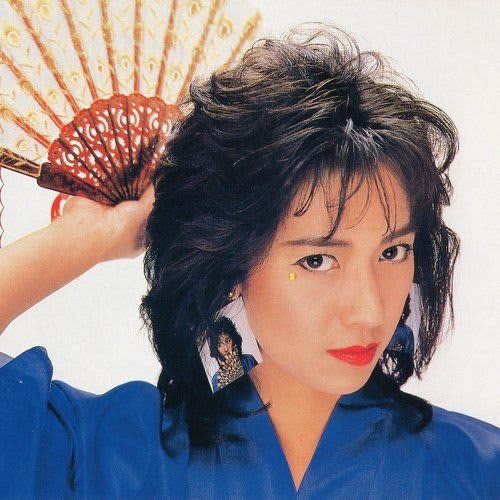
Cyber Hearts: Tomoko Aran and the Girl-Powered Sound of 80s Anime
The 1980s in Japan, often referred to as Japan’s economic bubble period, witnessed not only rapid industrial growth but also significant social shifts, propelling the emergence of a vibrant youth culture that celebrated individual expression, technological innovation, and a blend of traditional and contemporary influences. At the heart of this movement was Tomoko Aran, a singer-songwriter who emerged as a defining figure in the landscape of 80s anime and music, particularly with her contributions to the City Pop genre—a sound that epitomized the urban, youthful spirit of the time.
Aran's work, especially her notable album "Fuyu no Hi" released in 1983, serves as a sonic snapshot of the era and highlights the complexities of relationships and personal identity against a backdrop of metropolitan life. With a distinctive blend of synthesizers, jazz influences, and pop melodies, her music resonated with the eager, aspirational youth who were navigating a rapidly changing society. The themes in her music often reflect the experiences of young women in Japan—capturing moments of desire, loneliness, and empowerment. Tracks like "Tenshi no Yume" echo the playful yet poignant nature of young love, mirroring the emotional landscape depicted in contemporary anime.
In the realm of anime, the impact of music cannot be overstated. Anime of the 80s often featured soundtracks that were not merely background scores but integral components of storytelling. Series like "Bubblegum Crisis" showcased the fusion of futuristic visuals and catchy music, which appealed to both domestic and international audiences. Aran’s music found a place in this evolving narrative form, contributing to the rich tapestry of soundscapes that defined the visuals of the time. The thematic ties between her music and the story arcs in these anime reinforce a cultural symbiosis; for example, the urban settings depicted often reflected the same aspirational qualities found in her lyrics—an exploration of the female experience within the confines of a rapidly modernizing society.
The visual aesthetics of 80s anime often complemented the musical style of artists like Aran. Bright colors, bold character designs, and intricate urban landscapes created a vivid canvas that paralleled the upbeat, often nostalgic sound of City Pop. Notably, studios such as Gainax and Sunrise embraced these connections, infusing their series with soundtracks that enhanced emotional moments through music. The blend of synthpop elements with traditional Japanese motifs captured a sense of duality that resonated with audiences as they navigated their own identities in an increasingly globalized world.
However, the cultural products of this era are not without their complexities. While exploring the girl power narrative in anime, one must acknowledge the problematic portrayals that sometimes emerged. Although many female characters were depicted as strong and independent, others reflected stereotypes of femininity that can be viewed as regressive by modern standards. Works such as "Sailor Moon" and "Ranma ½" presented characters who wielded power but often within a framework of traditional gender expectations. Engaging with these nuances is vital; it encourages a dialogue that transcends temporal moral judgments, facilitating a deeper understanding of the cultural context in which these stories were told.
Moreover, Tomoko Aran’s musical legacy also deserves a nuanced inquiry. Initially carving her niche through the City Pop genre—a sound heavily influenced by Western funk and disco—Aran, alongside her contemporaries like Mariya Takeuchi and Anri, contributed to a unique fusion that resonated well beyond Japan. The popularity of City Pop has resurged in contemporary music circles, with artists worldwide drawing inspiration from its distinctive sound, thereby creating a transnational dialogue that connects retro aesthetics with modern musical interpretations.
Examining Tomoko Aran’s contributions within the broader socio-cultural and economic frameworks of 1980s Japan reveals a rich tapestry of influences and narratives that still resonate today. Through her music, entwined with the visual storytelling of anime, we gain insights into the aspirations, struggles, and joys of a generation navigating a technologically evolving landscape. The legacy of this era, characterized by its innovative spirit and cultural dialogue, continues to inspire both creators and audiences, reinforcing the enduring power of cultural products that reflect the complexities of their time. Understanding these connections not only deepens our appreciation for the art form but also for the multifaceted journey of cultural expression that defines the essence of retro anime and music.
Our Comics Newsletter
Join the newsletter to receive the latest updates in your inbox.



